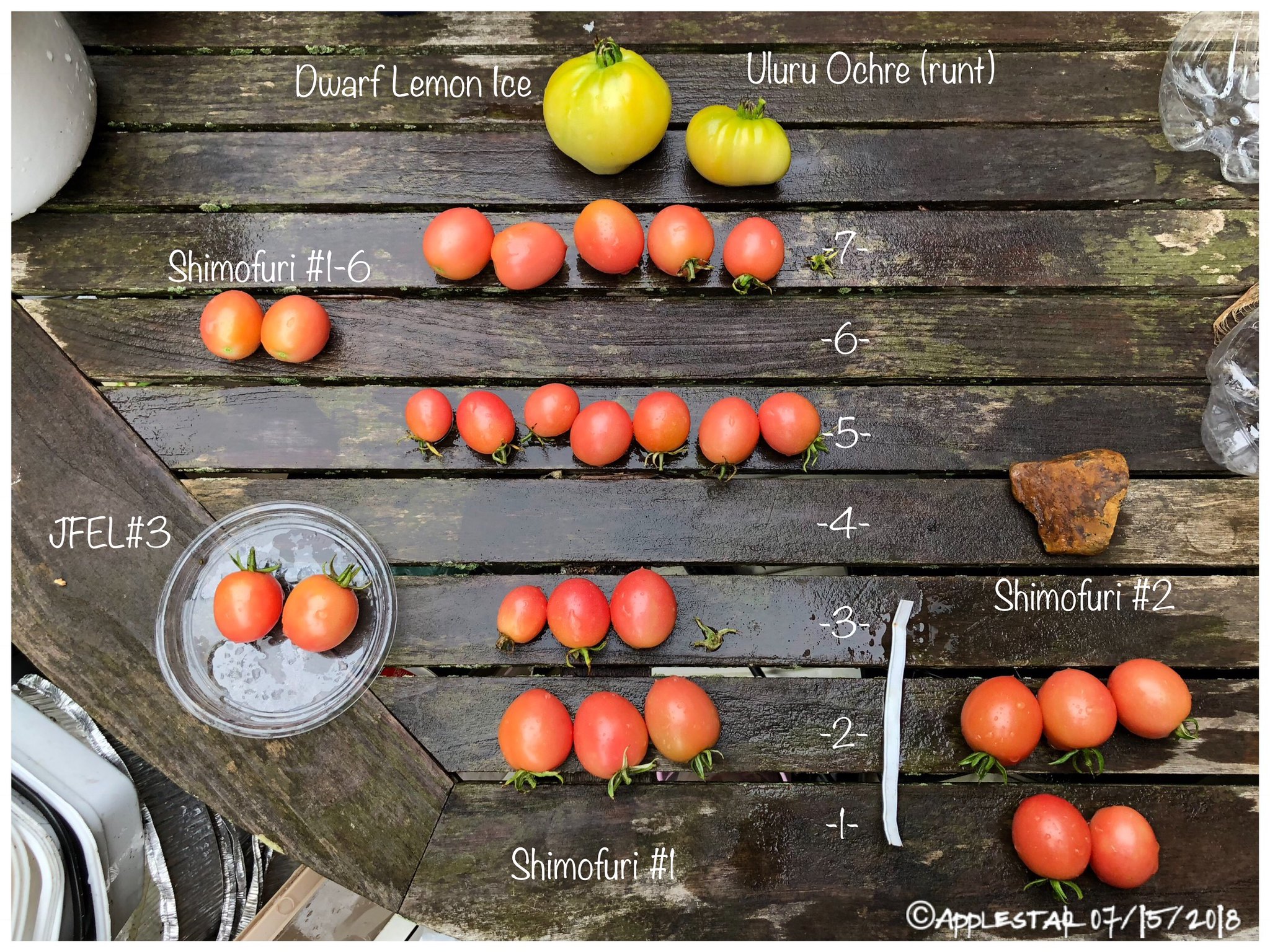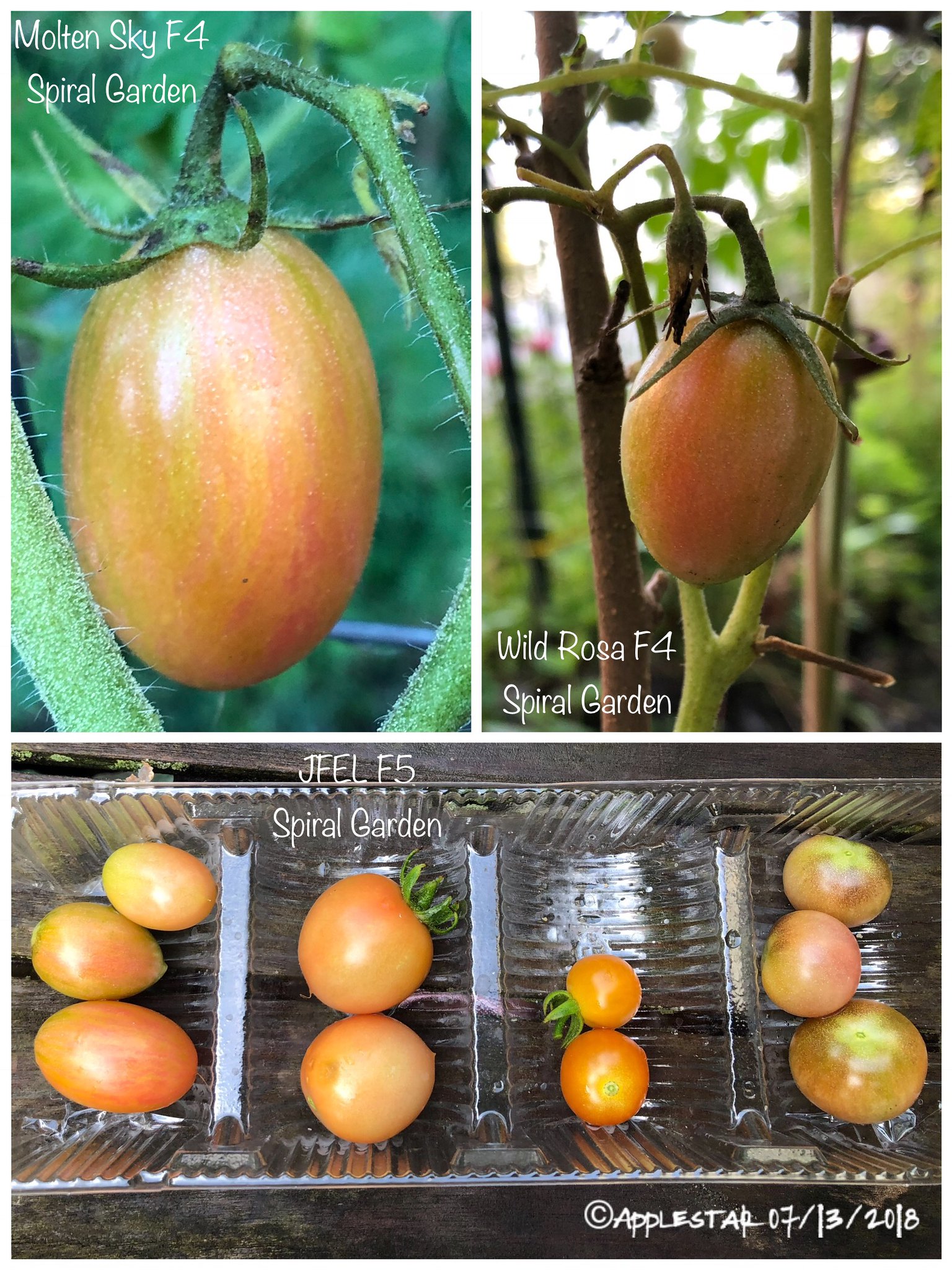- applestar
- Mod
- Posts: 30543
- Joined: Thu May 01, 2008 7:21 pm
- Location: Zone 6, NJ (3/M)4/E ~ 10/M(11/B)
For the most part, tomato plant diseases and insect damage will not be toxic/harmful to humans, but the eating quality of the fruits could have been affected. When there is a surface blemish like this, I like to peel the skin first. Fully ripe tomato skin will slip off by catching the edge of a very sharp knife and then pulling. You can also make the skin easier to peel by dip the fruit in boiling water for 20-30 seconds, then dunk in ice water. Don’t over-cook or the interior will get mushy and it will be difficult to make further observation.
Some damage will show up under the skin, others are only surface deep. Once you know what the damage is like you can often simply cut away deeper inedible portions by the compartmentalized segment of the tomato. As long as it is not fugal or rot that goes deeper and affect all parts of the interior, you can salvage fruits this way. Moldy and/or fermented fruit will be vinegary or musty. Smell the cut surface. Another way to tell this is already happening even when not obvious is by tasting a small portion —all the sugars will have been consumed by the mold or yeast organism already. (yes definitely spit out and rinse mouth if it tastes bad.)
If still in doubt, don’t eat the peeled and/or cut up fruits fresh but cook and heat thoroughly. I often use questionable tomatoes for my own omelette or pasta and not offer them to the rest of the family. Sometimes I end up with superripe delicious fruits that were just a bit unsightly.
Some damage will show up under the skin, others are only surface deep. Once you know what the damage is like you can often simply cut away deeper inedible portions by the compartmentalized segment of the tomato. As long as it is not fugal or rot that goes deeper and affect all parts of the interior, you can salvage fruits this way. Moldy and/or fermented fruit will be vinegary or musty. Smell the cut surface. Another way to tell this is already happening even when not obvious is by tasting a small portion —all the sugars will have been consumed by the mold or yeast organism already. (yes definitely spit out and rinse mouth if it tastes bad.)
If still in doubt, don’t eat the peeled and/or cut up fruits fresh but cook and heat thoroughly. I often use questionable tomatoes for my own omelette or pasta and not offer them to the rest of the family. Sometimes I end up with superripe delicious fruits that were just a bit unsightly.
- applestar
- Mod
- Posts: 30543
- Joined: Thu May 01, 2008 7:21 pm
- Location: Zone 6, NJ (3/M)4/E ~ 10/M(11/B)
I found photos to illustrate what I mean by mite infestation — (click to see enlarged photo that can be zoomed further)

In the photo above, the smallest -3- fruit is the worst affected with brown/russeted shriveled calyx. But you can also see some signs on calyces of -5- and -7- fruits. Healthy, unaffected calyces are green and mostly fresh looking.

- In these photos, compared to Molten Sky, Wild Rosa is heavily infested and russeted, meaning it has brown powdery-looking fruit stem and calyx.
- In the bottom photo of the collage, the same Wild Rosa fruit is in the left-most compartment between the other two fruits. If you zoom in, you can see the brown powdery russet stain around the stem scar after the calyx was removed
When this badly damaged, the fruit size and quality as well as appearance suffers (faint brown powdery-look) even without actual obvious damage on the fruit itself.
...I’m thinking yours are showing russetting damage (hard, corky brown patches) on the fruits.

In the photo above, the smallest -3- fruit is the worst affected with brown/russeted shriveled calyx. But you can also see some signs on calyces of -5- and -7- fruits. Healthy, unaffected calyces are green and mostly fresh looking.

- In these photos, compared to Molten Sky, Wild Rosa is heavily infested and russeted, meaning it has brown powdery-looking fruit stem and calyx.
- In the bottom photo of the collage, the same Wild Rosa fruit is in the left-most compartment between the other two fruits. If you zoom in, you can see the brown powdery russet stain around the stem scar after the calyx was removed
When this badly damaged, the fruit size and quality as well as appearance suffers (faint brown powdery-look) even without actual obvious damage on the fruit itself.
...I’m thinking yours are showing russetting damage (hard, corky brown patches) on the fruits.
